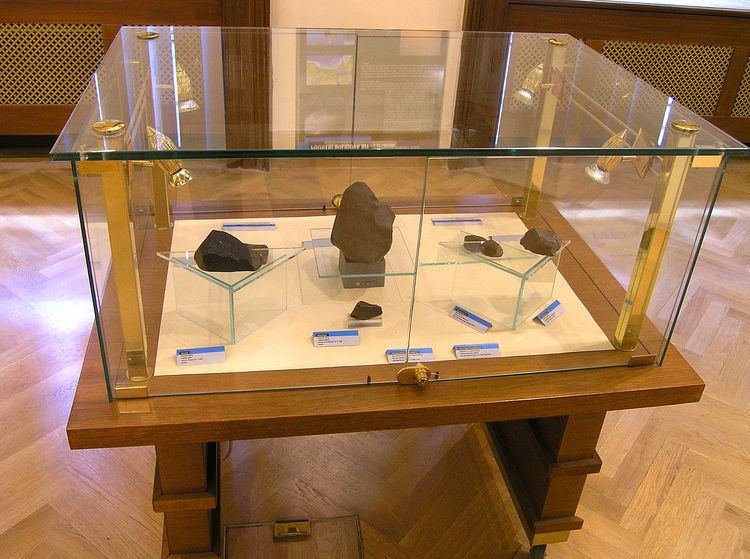Group H5 | Observed fall Yes | |
 | ||
The Příbram meteorite fell on 7 April 1959 east of Příbram, former Czechoslovakia. Four pieces were found, the largest having a mass of 4.425 kilograms (9.76 lb) (near the village of Luhy, Dolní Hbity municipality).
Contents
Příbram was the first meteorite whose trajectory was tracked by multiple cameras recording the associated fireball. This allowed its trajectory to be calculated leading to a determination of its orbit and aiding its recovery.
PiecesEdit
Four pieces were found with a total weight 5.730 kilograms (12.63 lb) out of an estimated 53 kilograms (117 lb) weight before break-up. The largest found piece was probably only the second largest. These four pieces were found, named after villages, where they were found:
All pieces are on display in National Museum in Prague.
HistoryEdit
The fall was preceded by a bright bolide seen throughout western Czechoslovakia (as it then was). The light extended to 50 kilometres (31 mi). At about 13 kilometres (8.1 mi) high the meteor broke up. One loud and several quieter explosions were heard. The meteorite was found to have penetrated ploughed land to a depth of 20 centimetres (7.9 in), bounced and fallen 30 centimetres (12 in) further on.
